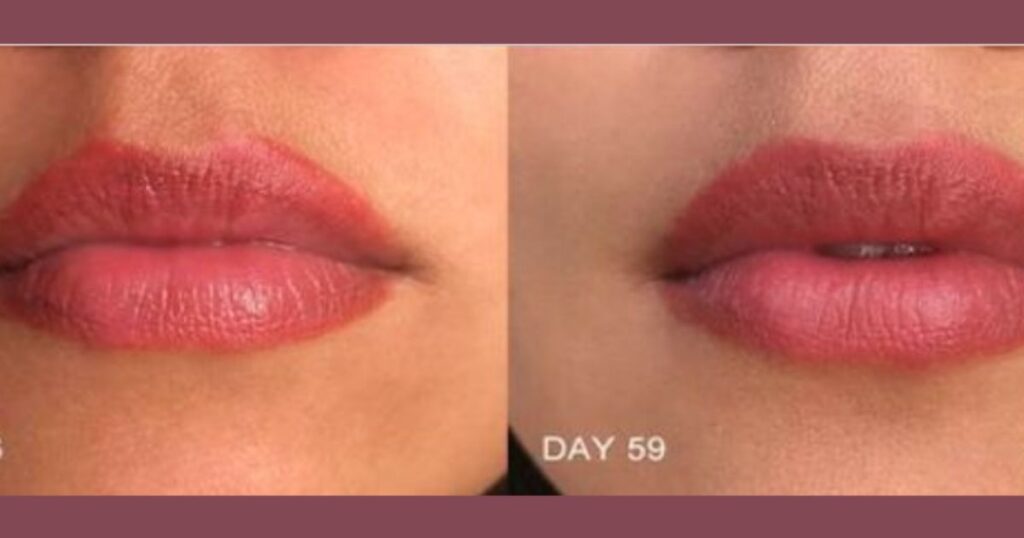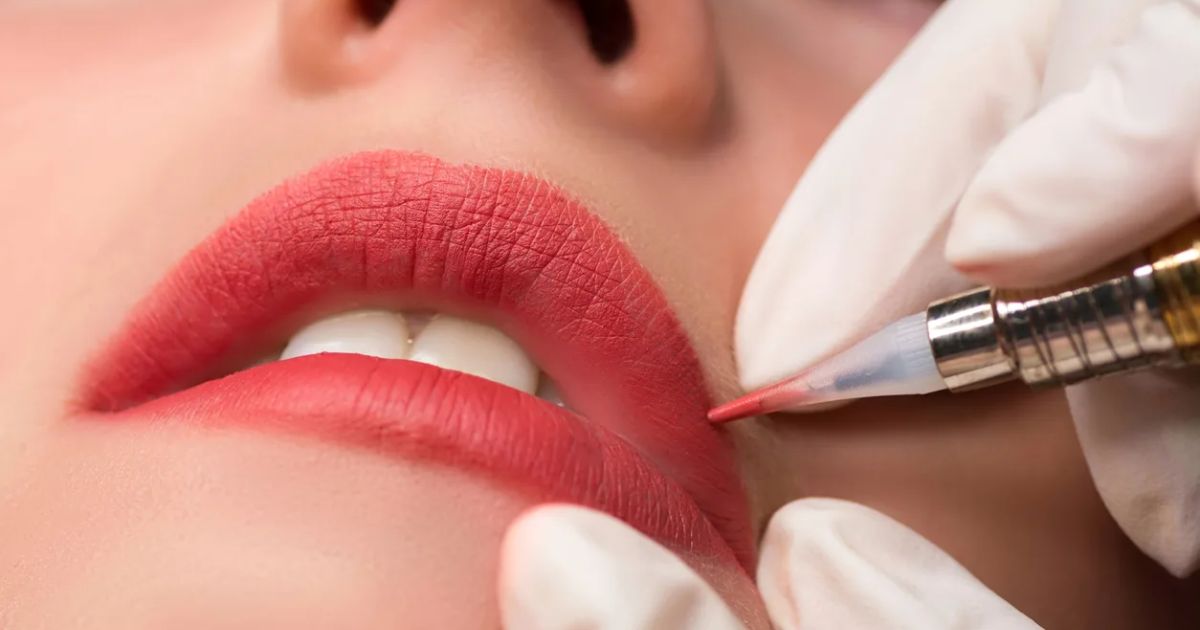Lip Blushing has gained immense popularity in recent years due to its ability to enhance lip color and achieve a semi-permanent makeup look. This comprehensive guide aims to provide you with in-depth knowledge about the Lip Blushing healing process. Whether you’re considering getting a Lip Blushing procedure or have recently undergone one, understanding the healing stages and aftercare is crucial for optimal results.
Understanding the Lip Blushing Healing Process
Lip Blushing is a cosmetic tattooing procedure that involves depositing pigments into the lips to enhance their color and shape. This semi-permanent makeup technique offers a long-lasting solution for achieving beautifully tinted lips. However, the healing process is a vital part of the overall Lip Blushing experience.
It’s important to note that Lip Blushing is not a one-size-fits-all process. The healing stages may vary from person to person, but understanding the general timeline and expectations can help you navigate through the recovery period more confidently.
Day 1: Immediate Aftercare
After the Lip Blushing procedure, the initial focus is on proper aftercare. Your artist will provide specific instructions, but some common guidelines include:
- Gently cleanse the lips with a mild, non-abrasive cleanser.
- Apply a thin layer of recommended ointment or aftercare product to keep the lips moisturized and protected.
- Avoid touching the treated area unnecessarily to prevent the introduction of bacteria.
Maintaining good hygiene and following the aftercare instructions diligently during this stage sets the foundation for a successful healing process.
Day 2-3: Initial Recovery Stage
During the second and third days, you may experience common symptoms such as swelling and tenderness. It’s essential to take measures to alleviate discomfort and promote healing:
- Apply cool compresses or ice packs to reduce swelling.
- Avoid consuming hot and spicy foods that may irritate the lips.
- Stay hydrated and maintain a balanced diet to support the healing process.
It’s normal for the lips to appear slightly darker during this stage, but the intensity will gradually decrease as the healing progresses.
Day 3-4: The Flaky Stage
Around the third or fourth day, you will enter the flaky stage of the healing process. The lips may start to peel and flake as the topmost layer of the treated skin naturally sheds off. It is crucial to resist the temptation to pick at the scabs or flakes to avoid potential complications and ensure proper healing.
During this stage, the lips might appear dry and uneven in color. This is a temporary phase, and it’s important to trust the healing process rather than becoming alarmed. Continue to follow the aftercare instructions provided by your artist.
Day 7-10: Final Healing Days
By the seventh to tenth day, the flakiness and peeling should subside significantly. The color of your lips will start to settle, and you’ll notice a more natural-looking result. However, it’s essential to remain cautious and provide adequate care during this phase:
- Keep the lips moisturized with a recommended lip balm or ointment.
- Avoid exposing the lips to excessive sunlight and use lip products with SPF for sun protection.
- Refrain from activities that may cause trauma or irritation to the healing lips, such as kissing, swimming, or using harsh lip products.
Following these guidelines will ensure optimal healing and help maintain the vibrancy of the Lip Blushing results.
Day 56-60 (8-9 weeks): Touch-Up Time

Around eight to nine weeks after the initial Lip Blushing procedure, you may schedule a touch-up appointment with your artist. The purpose of a touch-up is to refine and perfect the color and shape of the lips, ensuring long-lasting results.
Touch-ups allow your artist to address any minor fading or inconsistencies that may have occurred during the healing process. It’s important to follow your artist’s recommendations regarding touch-up timing to achieve the desired outcome.
After-care Long-Term
To enjoy the longevity of your Lip Blushing results, adopting a long-term aftercare routine is crucial. Here are some essential guidelines to follow:
- Apply lip balm with SPF regularly to protect the pigmented lips from sun damage.
- Avoid excessive sun exposure, as UV rays can cause fading and affect the color intensity.
- Refrain from using lip products that contain harsh chemicals, exfoliants, or irritants.
- Be mindful of activities that may compromise the pigmented lips, such as using abrasive facial scrubs or undergoing facial treatments.
By incorporating these practices into your daily routine, you can extend the lifespan of your Lip Blushing and maintain its vibrancy for an extended period.
Read Also: How to brush lash extensions and natural lashes
Avoid This During Your Aftercare Process
- To ensure a smooth healing process and optimal results, it’s essential to avoid certain activities, products, and factors that may interfere with the Lip Blushing healing process. Here are some crucial things to steer clear of:
- Picking or scratching at the scabs or flakes on the lips, as this can disrupt the healing process and potentially lead to scarring or uneven color distribution.
- Exposing the lips to direct sunlight without protection, as UV rays can cause pigmentation fading and affect the overall result.
- Applying makeup or lip products that contain harsh chemicals, exfoliants, or irritants, as these can cause irritation and interfere with the healing process.
- Engaging in activities that may result in trauma or excessive moisture on the lips, such as swimming, sauna visits, or using hot tubs.
- Smoking or consuming alcohol excessively, as these habits can slow down the healing process and impact the final result.
- Overusing or misusing lip balm or ointments, as this can create a barrier that hinders the natural healing process.
- By avoiding these actions and following the recommended aftercare guidelines, you can minimize the risk of complications and achieve the best possible outcome from your Lip Blushing procedure.
FAQ’s
How to speed up healing after lip blush?
To speed up healing after lip blush, follow proper aftercare instructions provided by your artist, which may include keeping the lips moisturized, avoiding picking at scabs or flakes, and protecting them from excessive sunlight.
What is the healing stage of lip blush?
The healing stage of lip blush involves initial recovery, followed by the flaky stage, and eventually the final healing days, during which the lips gradually settle in color and texture to achieve long-lasting results.
What do I need to know about lip blushing?
Lip blushing is a semi-permanent cosmetic tattooing procedure that enhances lip color and shape. It requires proper aftercare, including avoiding activities that may disrupt the healing process, protecting the lips from sun exposure, and following the artist’s instructions for long-lasting results.
Why is my lip blush not showing?
There could be several reasons why your lip blush may not be showing, such as excessive exfoliation, improper aftercare, or individual factors affecting pigment retention. Consulting with your lip blush artist can help identify the specific cause and determine the best course of action.
Conclusion
In summary, the Lip Blushing healing process is an essential aspect of achieving long-lasting, beautifully tinted lips. Understanding the stages of healing, following proper aftercare instructions, and avoiding potential pitfalls are crucial for optimal results.
Remember to consult with a professional Lip Blushing artist who can guide you through the procedure and provide personalized aftercare instructions. By following their guidance and incorporating long-term aftercare practices, you can enjoy the benefits of Lip Blushing and maintain your vibrant, enhanced lip color for an extended period.











